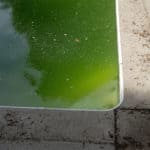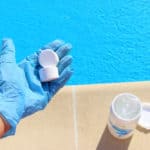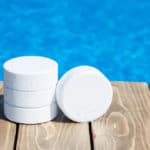The answer to this question can vary slightly depending on the individual. While some people will state that putting rocks in the bottom of your pond is beneficial, others do not agree with this.
If you are considering using rocks at the bottom of your pond, it is important to ensure that you are regularly checking your pond and its cleanliness. While you can add rocks to your pond, this does not necessarily mean that you should in all situations.

Rocks in a pond certainly do add to its overall aesthetics. They allow the pond to look far more appealing. They can also provide potential hiding spaces for fish too from things such as the sun and potential predators.
This is important as all fish should have a safe space to retreat to if they need to.
However, more often than not, too many rocks can be more hassle than they are worth. If you are someone that has owned a pond for many years, then it is likely that you can add rocks to your pond with no issues.
However, if you are a beginner, it is not something that we would always recommend at first. It is better to have a good understanding of the positives and negatives before using rocks.
When you add rocks to a pond, it can prevent the water in the pond from cycling properly, especially if they are incorrectly placed, or there are too many in the pond.
When it comes to fish keeping, even in ponds, the quality of the water is essential. If there is leftover fish waste and food that gets trapped between the rocks, rather than being able to drain out of the pond, this affects the water quality badly.
Over time, if the water in your pond is not cycling correctly, this can cause a spike in things such as ammonia, tannin acid and nitrate, which affects water quality and can impact the fish in the pond too.
While rocks can cause beneficial bacteria and can help pond plants to grow, you will need to clean them regularly and ensure that you are correctly educated on their placement, and upkeep.
Overall, it is possible to add rocks, but you will need to keep a close eye on them to ensure they are not causing a build up of bad bacteria. When placed correctly, they can be great hiding spots, and add to the pond aesthetic.
Rocks are useful if you are planning on adding pond plants. Rocks give the plants an anchor for their roots and allow them to grow correctly. Pond plants are great for helping the post water to remain oxygenated.
Should I put gravel in the bottom of my pond?
Gravel is quite similar to rocks in terms of putting them in the bottom of your pond. While you can do this, it is not always recommended. If you want to use gravel, purchasing larger gravel is better than smaller gravel.
This is because larger gravel will be easier to clean in comparison to smaller gravel.
With gravel, you will need to ensure that leftover food and fish waste is being cleaned regularly. While a small amount can be beneficial to the overall water quality, too much will have a negative impact.
One of the most important parts of fish keeping is ensuring that the water quality is as balanced as possible.
Gravel is aesthetically pleasing, and it can help to conceal the bottom of the pond, which has many benefits. If you want to include gravel, you will want to strategically place it in the pond to ensure that it is not preventing the water from draining or cycling correctly.
In addition to this, the sludge and waste build up will need to be removed before it becomes an issue. It is surprising how quickly the waste can build up, and you will need to be prepared to keep an eye on this.
If you want the pond to be as low maintenance as possible, we would recommend that you do not place gravel into it to begin with. Larger rocks or pebbles will likely be the better option for you.
On the whole, some of the best additions to ponds are pebbles, they are fairly easy to clean and maintain, and they provide a good environment for your fish. While they will help to anchor plants and allow your fish to feel safer overall, they are more manageable in comparison to gravel.
Should you put sand in the bottom of a pond?
We would not recommend putting sand in the bottom of a pond. While placing pebbles, rocks and gravel in ponds can be debated, the consensus is that sand is not really a great idea. This is for a number of different reasons.
The main reason why sand is not recommended is due to how small the sand particles are. Sand is a lot finer in comparison to gravel and pebbles. Given this, it has a far higher chance of causing your filters to become clogged and blocked.
Fish pond filters are pivotal in keeping the pond water levels correct. Given this, you will want to avoid them becoming damaged from using sand in your pond.
While you can purchase filters that are created specifically with sand in mind, these are still prone to blocking. Not only is this not great for your water quality, but it can be costly to replace too.
Many people assume that sand is a great option as it will help to conceal the pond liner. However, if you are choosing between gravel and sand, gravel is by far the better option.
In addition to this, sand will interfere with the oxygenation of the pond which will be detrimental to the fish and the water quality. Sand is far more difficult to manage and clean overall. Given this, we would not recommend adding it to your pond.









